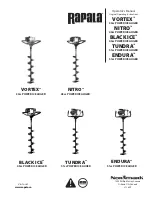
7
page
PRECAUTIONS
•
Circulatory disorder: stimulation increases the metabolic demand and
this demand can exceed the oxygen supply, thus increasing the pain.
It can also lead to ischemia or necrosis in the tissue.
•
Impaired cognition or communication: increased risk of injury
to the patient. The patient's opinion, judgement and behaviour must
be known in order to use the device safely. (Do not apply stimulation
to patients who are unable to express themselves).
•
Skin disease (e.g. eczema): resistance is decreased,
which increases the risk of burns.
•
Active epiphyseal plate: risk of impairing bone growth.
•
Chest: risk of affecting normal heart function.
•
Lower abdomen: high-intensity stimulation carries a risk
of increasing gastrointestinal motility.
•
Abundant fat tissue: risk of ineffective treatment; the current does
not reach the target tissue (muscle) because the fat tissue increases
electrical impedance, which limits the penetration of the current
(NMES).
SPECIFIC CONTRAINDICATIONS
AND PRECAUTIONS FOR
INTERNAL USE
LOCAL CONTRAINDICATIONS
•
Urethral pathology: stenosis, urethral stricture, irradiated
or scarred urethra
•
Presence or suspicion of a vaginal, urinary or anal infection
or yeast infection
•
Fistula, vulvar lichen sclerosus
PRECAUTIONS UNDER THE SUPERVISION
OF A QUALIFIED HEALTH CARE PROFESSIONAL:
•
Systemic locomotor disorders
•
Spinal conditions
•
Post-partum: wait for 6 to 8 weeks before starting any
neuromuscular electrical stimulation
•
Pelvic or abdominal surgery in the last 6 months
•
Pelvic organ prolapse
•
Acute urinary retention
* This device is not indicated
for stimulating denervated
pelvic floor muscles.








































